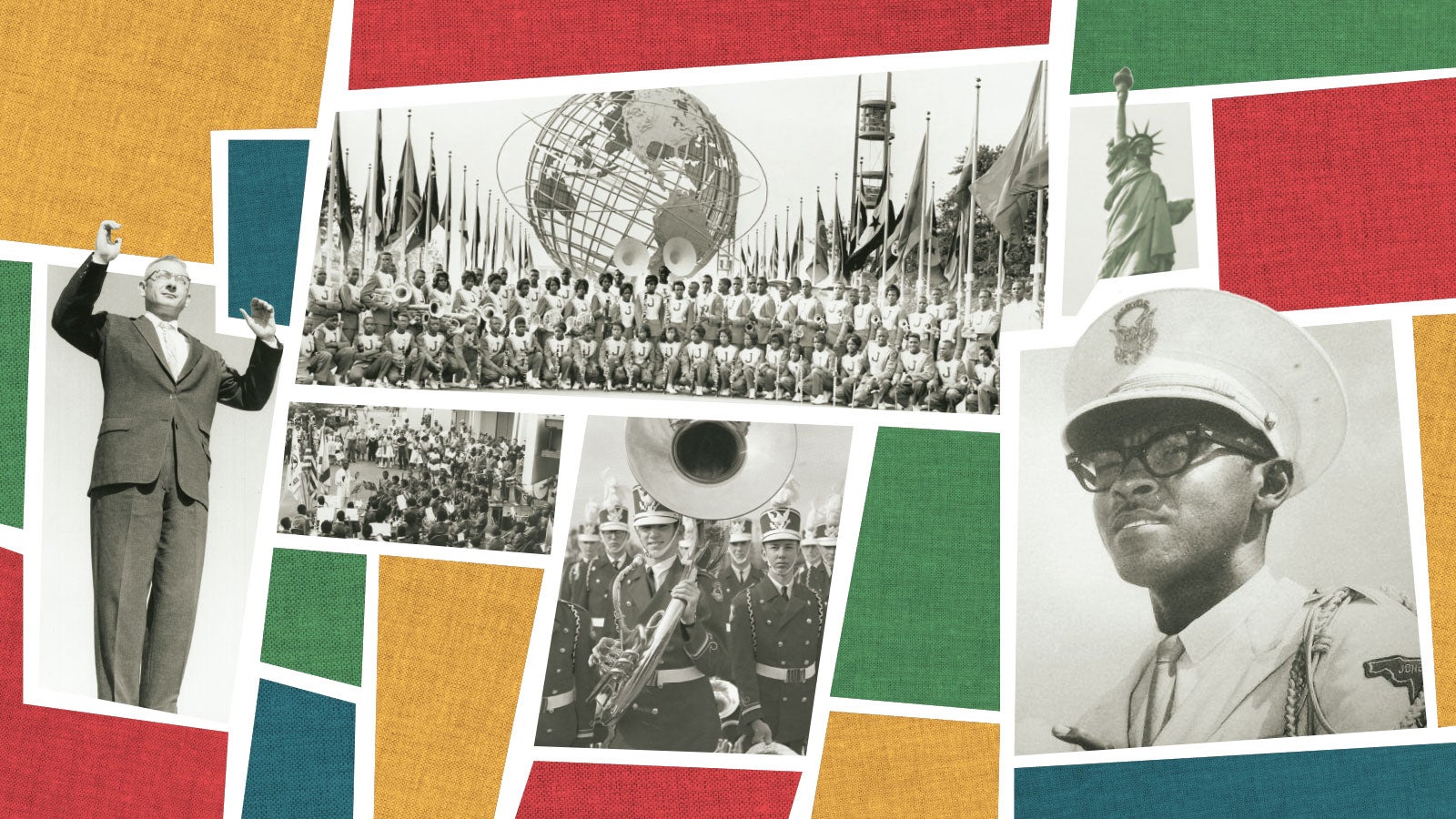
A Tale of Two Bands
Spring 2019 | By Jeffery C. Billman ’01 ’10MA
Orlando in the mid 1900s wasn’t Selma, Alabama, or Little Rock, Arkansas — places that are synonymous with the violent struggles and protests of the civil rights movement.
Orlando, however, was segregated. The newly constructed Interstate 4 cut off Parramore, an African-American neighborhood named for a former mayor and Confederate captain, from downtown and white society.
There was systemic white supremacy. As in many parts of the country, white kids went to better schools; their parents had better opportunities.
There were protests — black high school students arrested for trying to order from the lunch counter at Woolworth’s — and violence — in 1920 a white mob killed African Americans in Ocoee in an effort to suppress black voting, to cite just one example. But by midcentury, the city’s officials tried to tamp down tensions before they spread. The City Beautiful was careful to project an image of peaceful coexistence to the outside world.
There was some truth to this projection, at least relative to the rest of the South. Segregated though it was, Parramore thrived, full of culture, commerce and wealth. And at the center of it was Jones High School, the black high school believed to have been established in 1895.
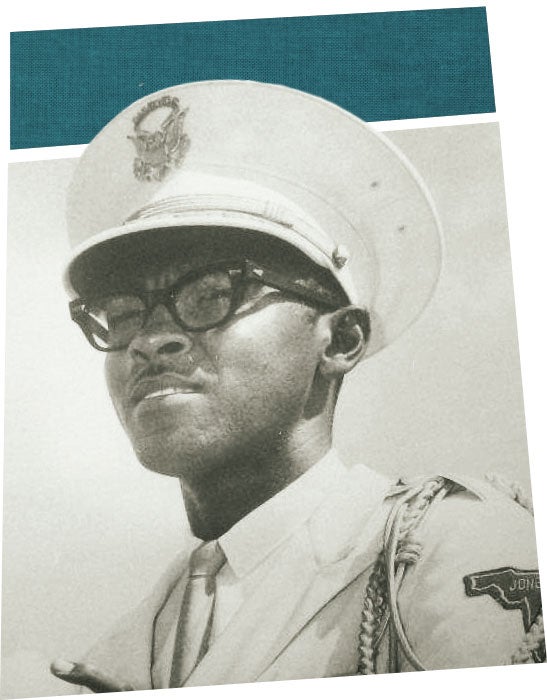
James “Chief” Wilson began directing the Jones High School marching band in the 1950s.
“Jones was central to the community,” says Ben Brotemarkle, executive director of the Florida Historical Society. “Everybody in the community went there. It has had some pretty prominent graduates over the years. Of course, Chief Wilson was a pretty big part of that.”
By Chief Wilson, he means James Wilson, who died in December at age 90. From 1950 to 1990, Wilson taught music at Jones and led its marching band to greatness. And in 1964, as Southern senators were filibustering the Civil Rights Act, Wilson and his band — about 100 parents and students in total — took a trip to New York City that fundamentally reshaped Orlando, the city he called home the rest of his life.
“I might be taking too much credit, but we were the catalyst for the integration of the whole community,” Wilson once said.
He wasn’t taking too much credit. If anything, Wilson was taking too little. Not only did the New York World’s Fair trip help facilitate the desegregation of Orlando, but the harmonious image it sent to the world might have prodded a certain theme park entrepreneur to give Orlando a closer look.

This is the story that the new documentary Marching Forward aims to tell. The film covers more than the World’s Fair trip. It’s also about the nuances of race relations in Orlando during the latter days of Jim Crow and the unlikely friendship forged between Wilson and Delbert Kieffner, the white bandleader at Edgewater High School. It’s about tireless devotion to musical excellence and the foundation of traditions that remain to this day. And it’s about how the synchronicity of all those things may have helped lure Walt Disney World to Central Florida.

Delbert “Del” Kieffner led the Edgewater High School marching band
In other words, it’s a complex, layered story, difficult for even a skilled documentarian to pack into a 60-minute feature. The accomplishment is all the more remarkable when you consider that it was pieced together by two professors and a handful of UCF students, most of whom had no background in documentary filmmaking — and even more so when you realize that it’s a good film on its own merits, smartly crafted and edited, with poignant interviews interspersed with archival footage and animation.
This is the fourth documentary that associate professor of history Robert Cassanello and associate professor of film Lisa Mills ’99MA have made in the past decade along with students in their Honors Advanced Documentary Workshop class. Their 2014 film, Filthy Dreamers, won an Emmy in the College Television Awards in 2016.
But Marching Forward, which is scheduled to premiere at the Florida Film Festival in April, is Cassanello and Mills’ most ambitious endeavor. That’s not just because it’s their first feature-length film, meaning it’s twice as long as their other projects, but also because it’s the first examining events that took place in their backyard.
“For the previous films, we consciously chose a subject matter outside the area,” Cassanello says. But for this project, they wanted to do something about the community. And in the fall of 2015, Cassanello was part of a local panel that was doing a retrospective on the Civil Rights and Voting Rights acts. One of his co-panelists was an Orlando Sentinel writer who brought up the Jones band and its trip to the World’s Fair in 1964. Cassanello and Mills were intrigued.
“We’ve seen many documentaries about the well-known heroes of the civil rights movement. Chief and Del are the unsung heroes. They took risks and did what was right despite the color lines of the time. That took courage,” says Cassanello.
“Chief and Del are the unsung heroes. They took risks and did what was right despite the color lines of the time. That took courage.”Robert Cassanello

The not-so-simple story goes like this: When Wilson, a graduate of Florida A&M’s marquee Marching 100, arrived at Jones as a civics and history teacher in 1950, Orange County’s school system had a small music department and no dedicated music teachers. Few of his students had, or could play, an instrument. A no-nonsense disciplinarian, Wilson was both was feared and beloved. With help from the community, he scoured pawn shops and attics for spare instruments, and worked in lessons and band practice around his classes.
By the early 1960s, he was Jones’ full-time band director, and he’d made them a premier ensemble in Orlando.
Jones had the best band in town — even if they were from the proverbial wrong side of the tracks — and everyone knew it. They played at events everywhere in Orlando, on the white and black sides of town. Along the way, Wilson forged partnerships with white business owners and musicians, and became friends with Del Kieffner, the demanding Marine who directed the marching band at Edgewater.
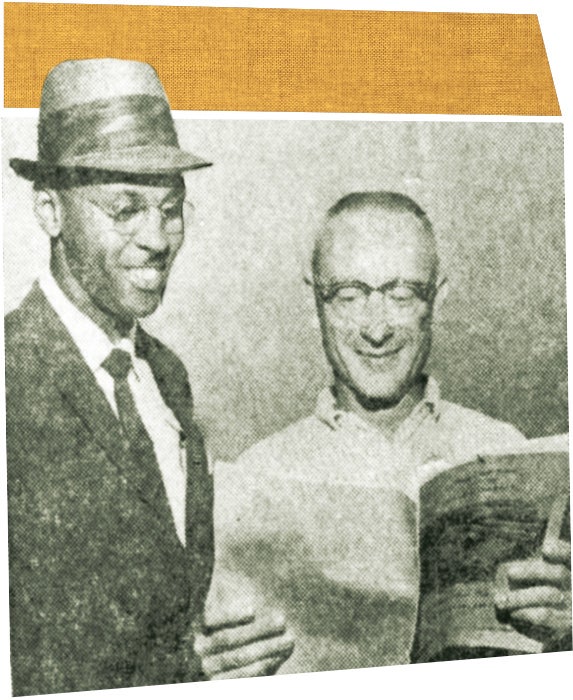
Through their passion for music, Wilson and Kieffner forged an enduring friendship.
“He was a very good friend of mine,” Wilson says in the documentary. “And we always protected our relationship.” Then came the 1964–65 World’s Fair in New York City. Bands from all over the country sent in films of their performances, seeking an invitation to perform at this marquee event. Edgewater got an invite; Jones did not.
That decision produced some discontent among Orlando’s African- American community, to say the least. Most in the community thought Chief’s band was more exciting, more cutting-edge, more in demand, lauded with awards. People thought that the only reason they were being shut out of the trip to the Big Apple was because the color of their skin.
Jones’ loyalists wrote letters to the newspapers and put pressure on city leaders. It didn’t take long for the city to come around: Both bands would go, white and black. Not at the same time, but they would go — if they each could raise the required $25,000, a little over $128 per member. The schools held fundraisers — bake sales, rummage sales — separately at first. But on a few occasions, the schools partnered, black and white kids washing cars and participating in community fundraisers.
Then, two white girls from Edgewater and two black girls from Jones were photographed together on the front page of the Orlando Sentinel, the paper’s first photo of blacks and whites in the same picture. Most African-American news then was relegated to the separate “Negro” section, which was printed on pink paper.
Realizing what the story of sending black and white bands to New York would show the world, the Sentinel’s publisher, Martin Andersen, got his paper behind Jones’ effort, selling trees to fund the trip. And Wilson and Kieffner together asked the city and county for equal funding for both groups, making it all but impossible for politicians to give Jones less.
“I don’t think there was much intentionality on the part of city leaders,” Cassanello says. “I think they were shamed into inviting Jones. They were also shamed into providing Jones with equal funding.”
“We integrated the system more or less, by the kids and other bands seeing us working together. It made a very harmonious thing in this particular district,” Wilson told the film crew. “Then we started meeting together, and we broke down a lot of barriers.”
Edgewater went in May 1964, right before finals; Jones in July, with a stop in Washington, D.C., the week President Lyndon Johnson signed the Civil Rights Act.
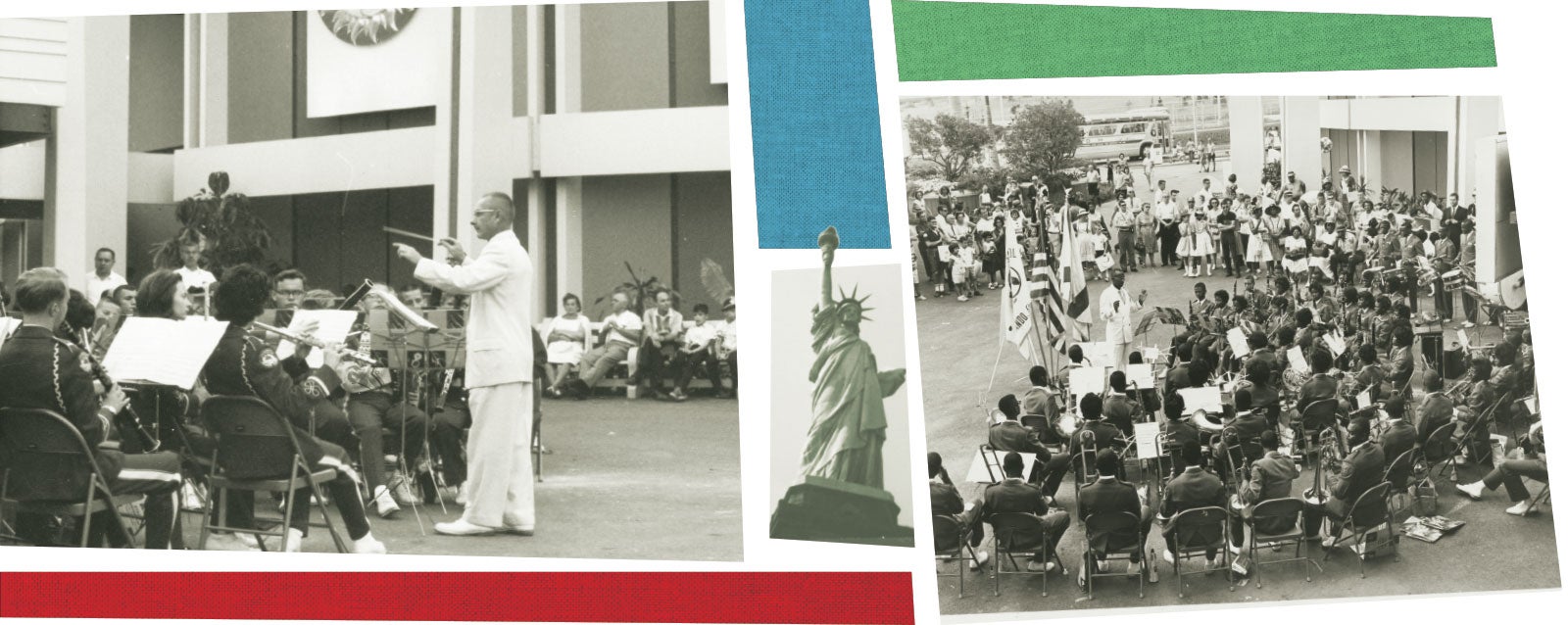
Edgewater High School band (left) and Jones High School band play at the 1964 World’s Fair.
Importantly, as Richard Foglesong, author of Married to the Mouse: Walt Disney World and Orlando, told filmmakers, that World’s Fair was a proving ground for Disney, which was looking to build a theme park east of the Mississippi. It was at the 1964 World’s Fair that Disney showcased the inspiration for and technology behind such park staples as It’s a Small World, the Carousel of Progress and the PeopleMover. Seven years later, Kieffner, with Wilson’s help, organized the marching band parade for the opening of Walt Disney World.
That these two events are connected, as Foglesong suggests, may be a stretch. It certainly involves conjecture. But if there’s even a kernel of truth to it, then those bands’ trips were more important to Orlando and Florida than anyone involved could have possibly imagined.

Orlando was different. Orlando had to be different. If it wasn’t different then — if the image it projected to the world in 1964 looked more like the Deep South and less than an oasis of relative racial tranquility — the Orlando of 2018 would be a radically different place. There’d be no Disney World. Which would almost certainly have meant no Universal Orlando Resort, no SeaWorld, no International Drive, no explosion of population growth and a hospitality industry to match, no tourism base to put Orlando on the map, and likely a much smaller University of Central Florida.
All of that can be traced, at least indirectly, to Jones’ and Edgewater’s bands traveling to New York City 55 years ago.
“The context is so important,” Foglesong says. “It was the mid-1960s. Florida was in the South, but it wasn’t Birmingham. Disney didn’t want to be in Birmingham. Here you have something from Orlando that reflects well on the city as the kind of place where the Disney company might
want to be.”
“It certainly was a major milestone for the African-American community. It certainly instilled a sense of pride and was a major accomplishment that the entire community got behind.”Ben Brotemarkle
Perhaps Walt Disney never noticed those two Orlando bands — Cassanello admits the film is engaging in some speculation, that the dates simply align. But the bands’ presence didn’t hurt, and it told the story Orlando wanted to tell about itself, even if that story wasn’t the whole truth. (A few years later, when Orange County schools started to desegregate, the mostly white schools got the most renowned black teachers — including, for one semester before he insisted on returning to Jones, Wilson — while the mostly black schools got the least experienced white teachers.) Certainly, if Orlando was beset by racial strife, if it was another Birmingham, Disney would have looked elsewhere.
Regardless, Jones’ trip was a seminal moment for Orlando’s civil rights evolution.
“I don’t know how big an impact it had on the white community,” Brotemarkle says. “It certainly was a major milestone for the African-American community. It certainly instilled a sense of pride and was a major accomplishment that the entire community got behind. In that regard, it was a big contributor to the civil rights movement.”
After desegregation, Brotemarkle points out, Parramore languished. Wealthier black families moved out; slumlords and homeless shelters moved in. City revitalization efforts sputtered and faltered.
The story of Jones’ and Edgewaters’ bands, Brotemarkle says, could help re-instill the neighborhood’s sense of pride. “I think knowing the history of your community can always make you feel more connected to where you’re living.”
And maybe this film could do the same for the students at Jones today.
“A lot of people don’t know what African Americans went through in the ’50s and ’60s,” says Barbara Burns, a majorette in that 1964 Jones marching band who later taught math there for 28 years. “And I think it would enlighten some of the students at Jones to see the struggle that Jones went through to be as great as they are now. When I was in school there, there were no white people around. By [Jones and Edgewater high] schools coming together, it made a difference, and people could see that all people are the same.”
Burns continues: “When I had children, I made sure they didn’t feel inferior. This film is going to show how far we’ve come, and how two men and music brought these schools together.”
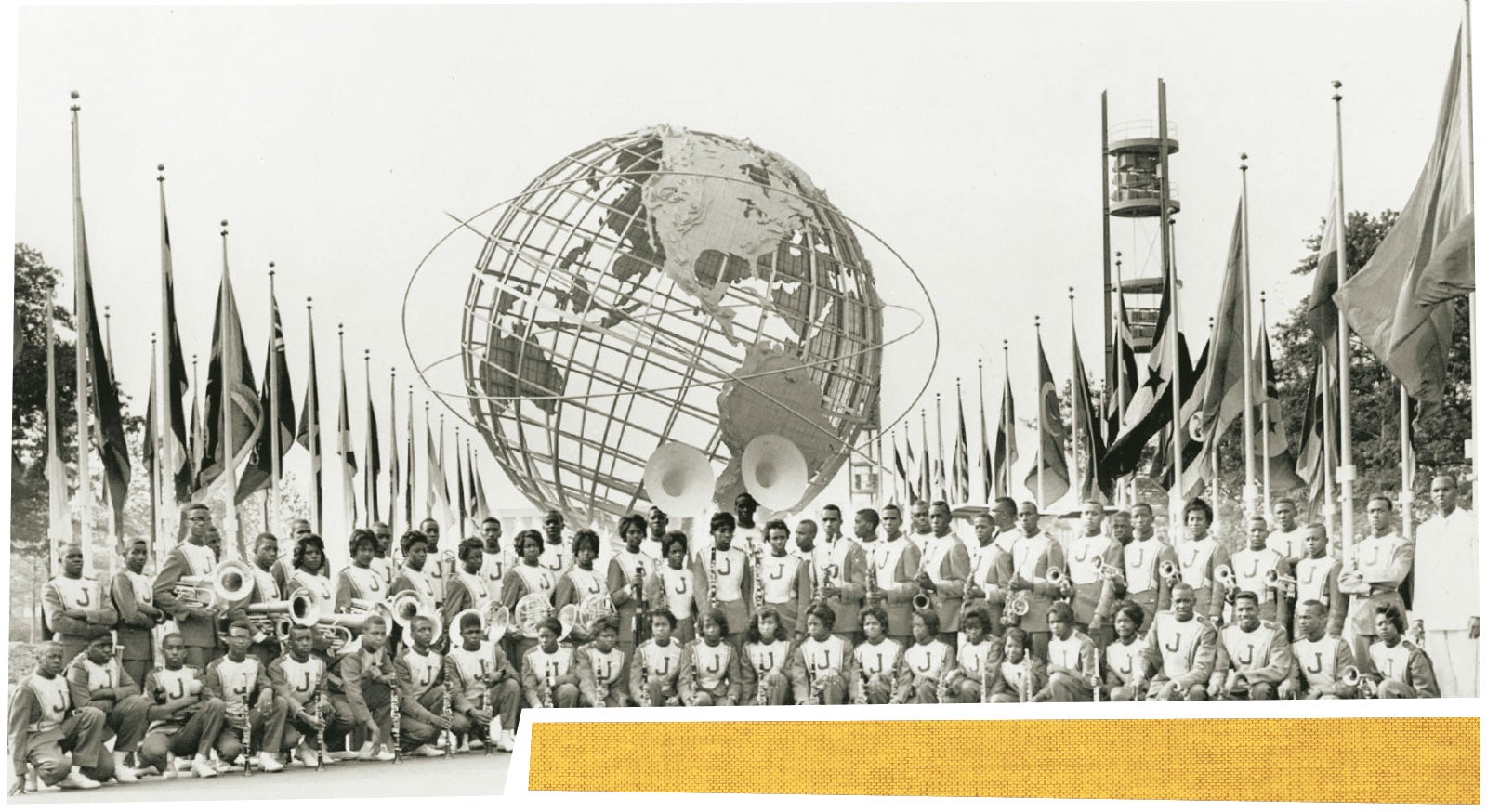
The Jones band at the 1964 New York World’s Fair.